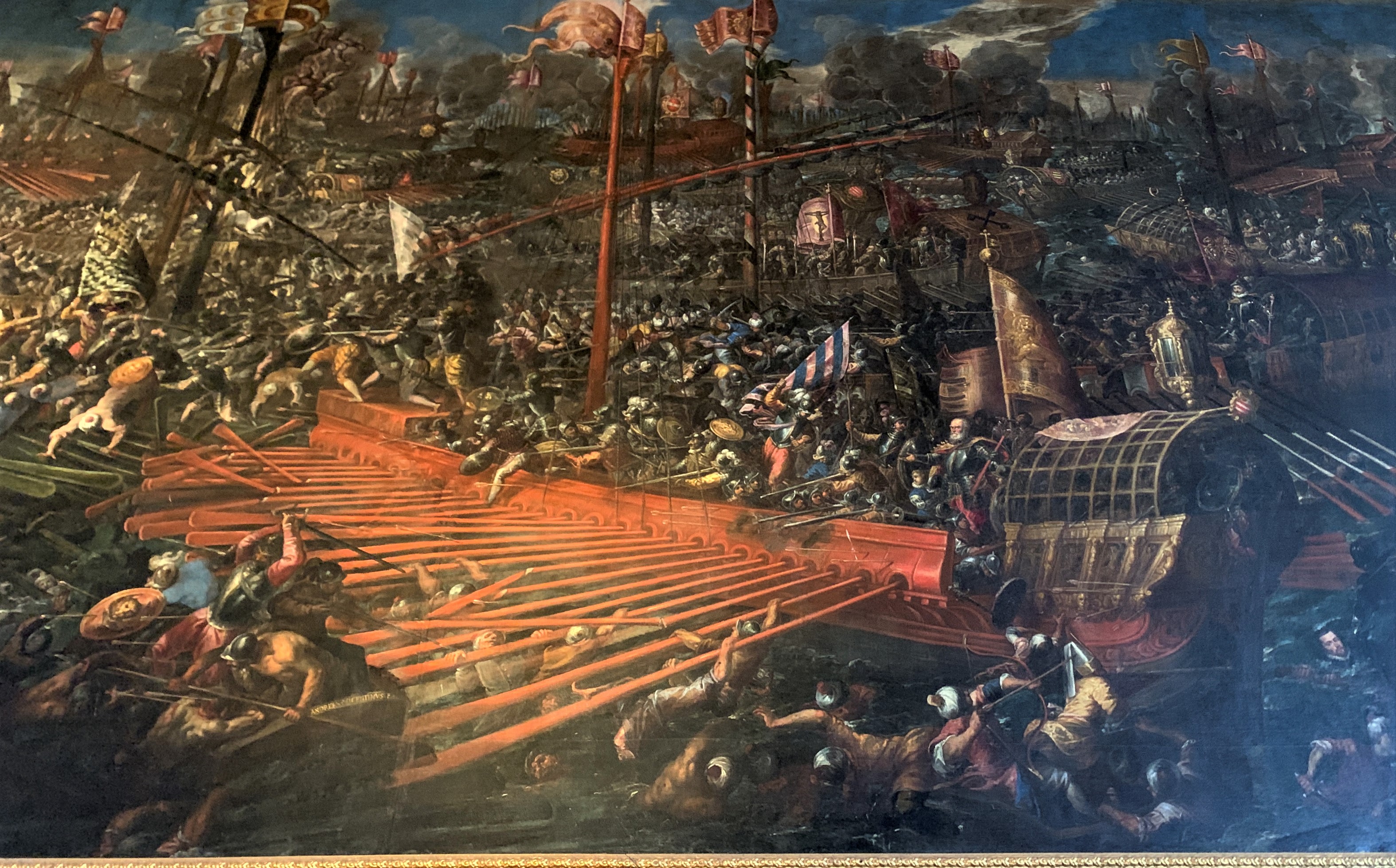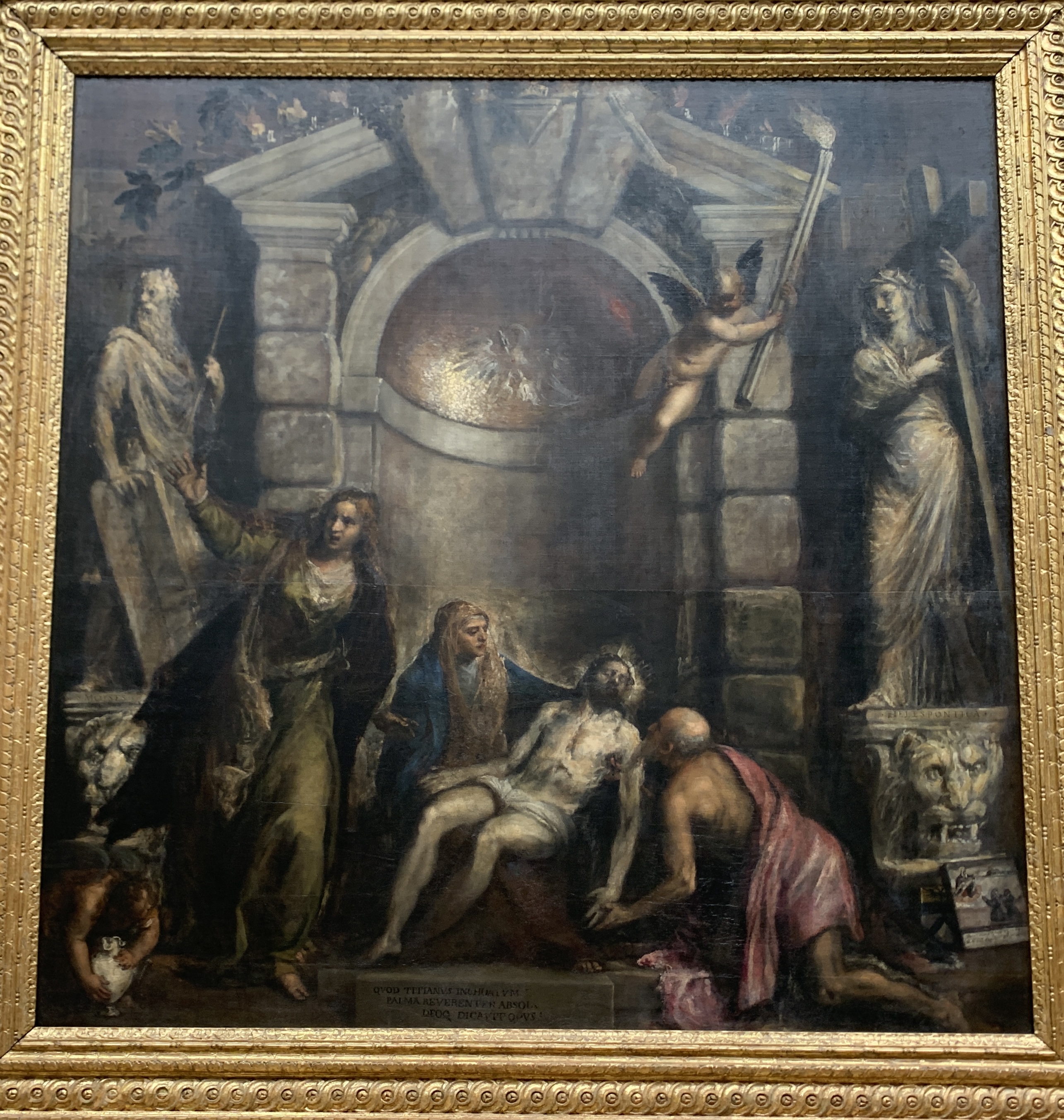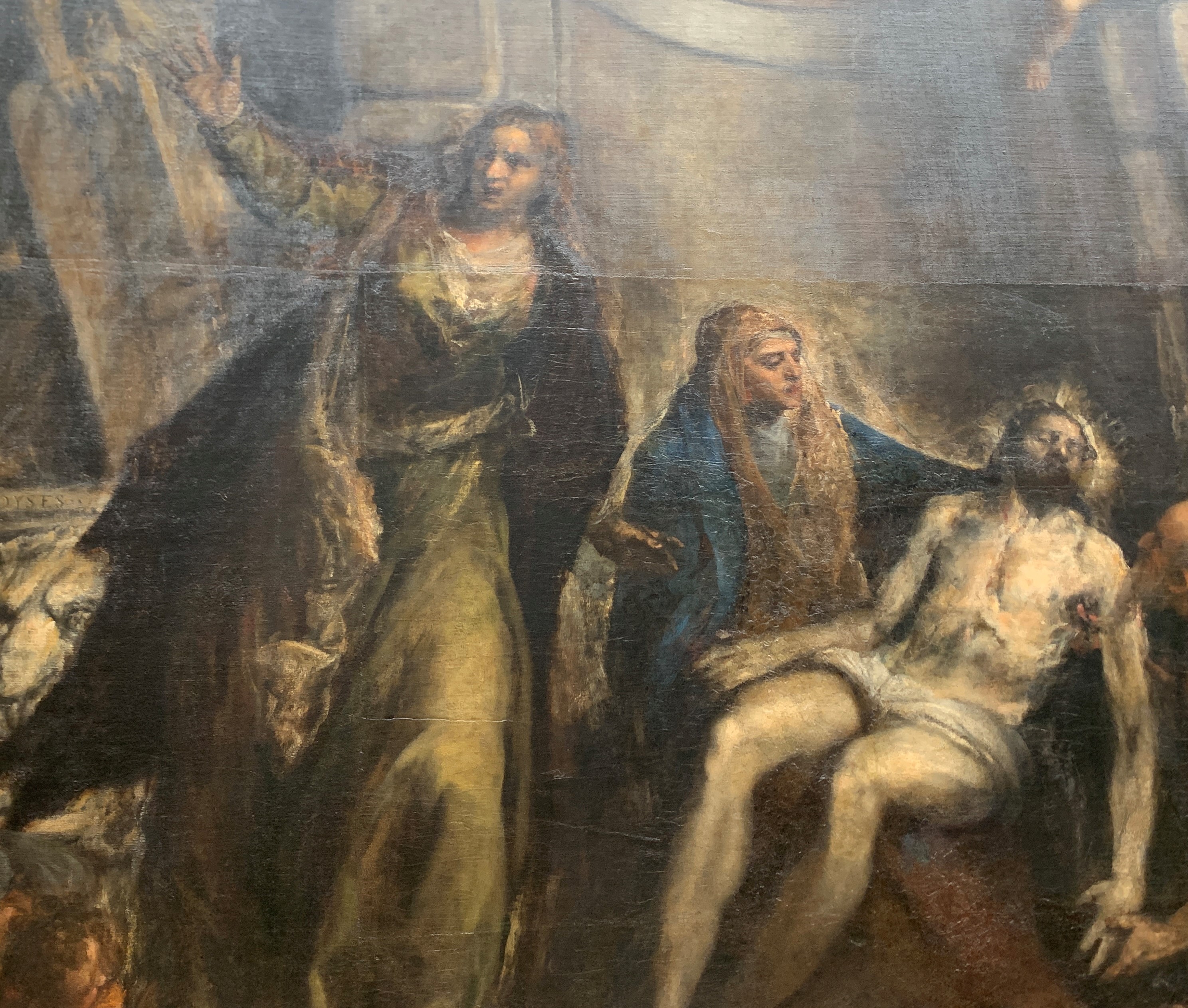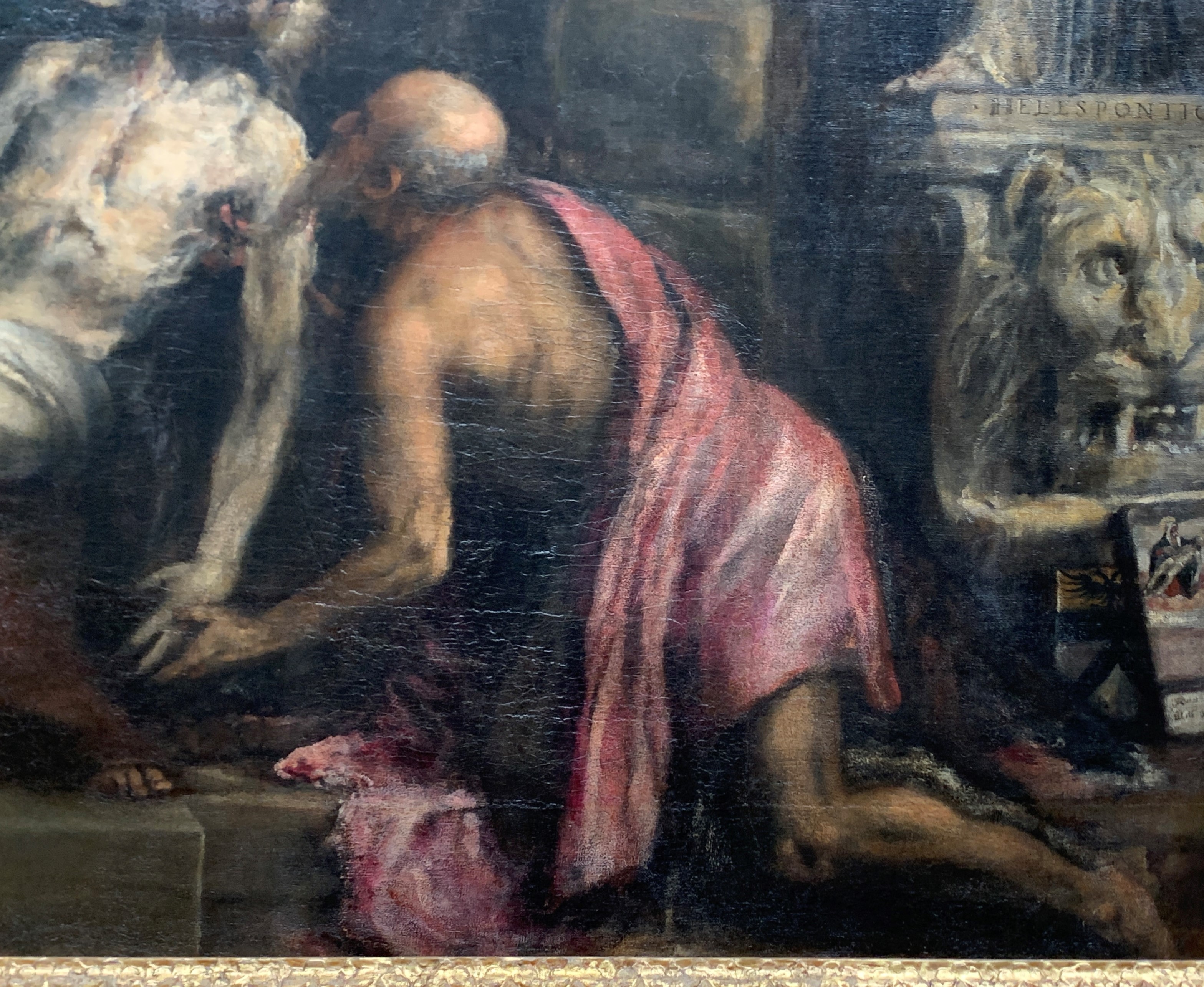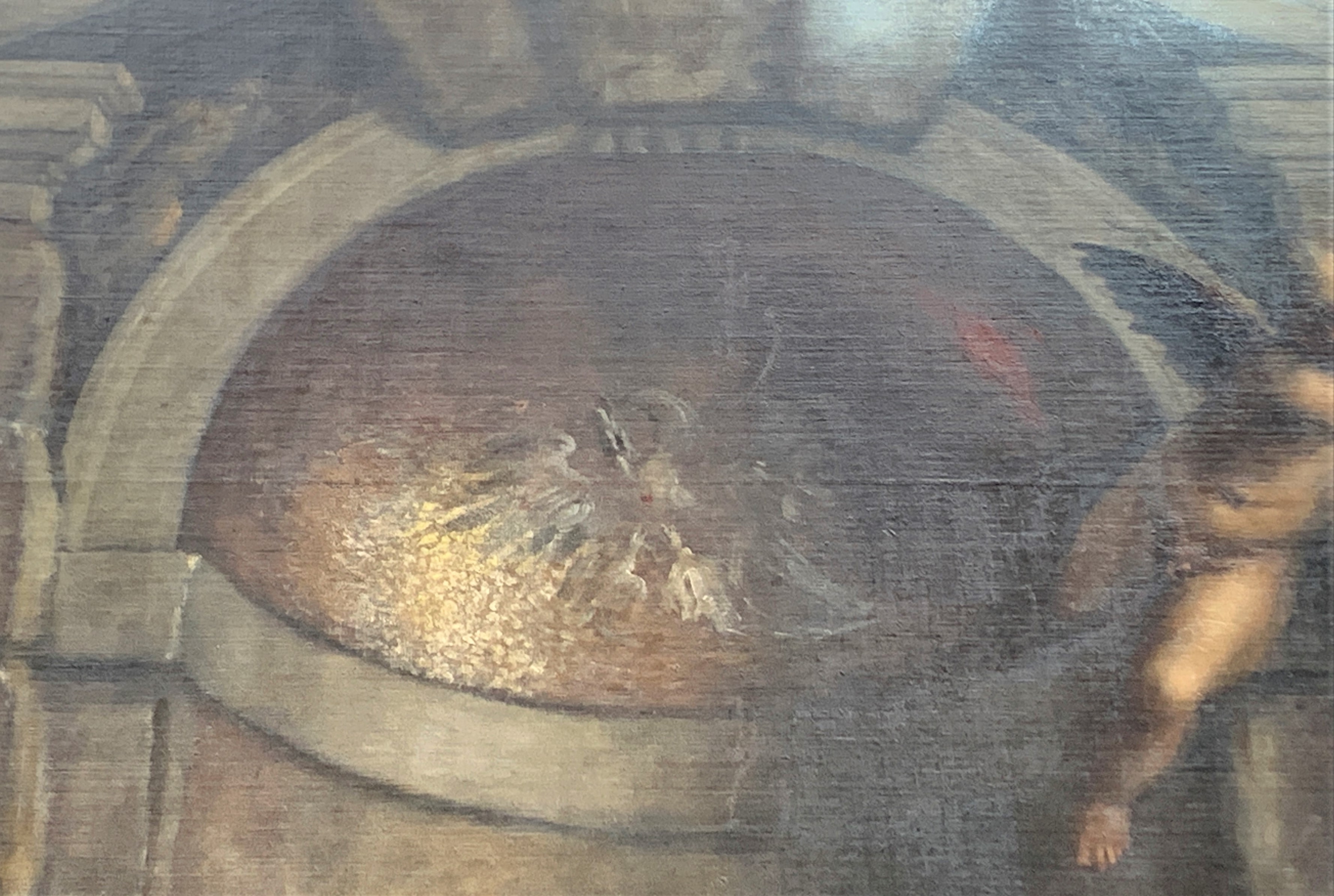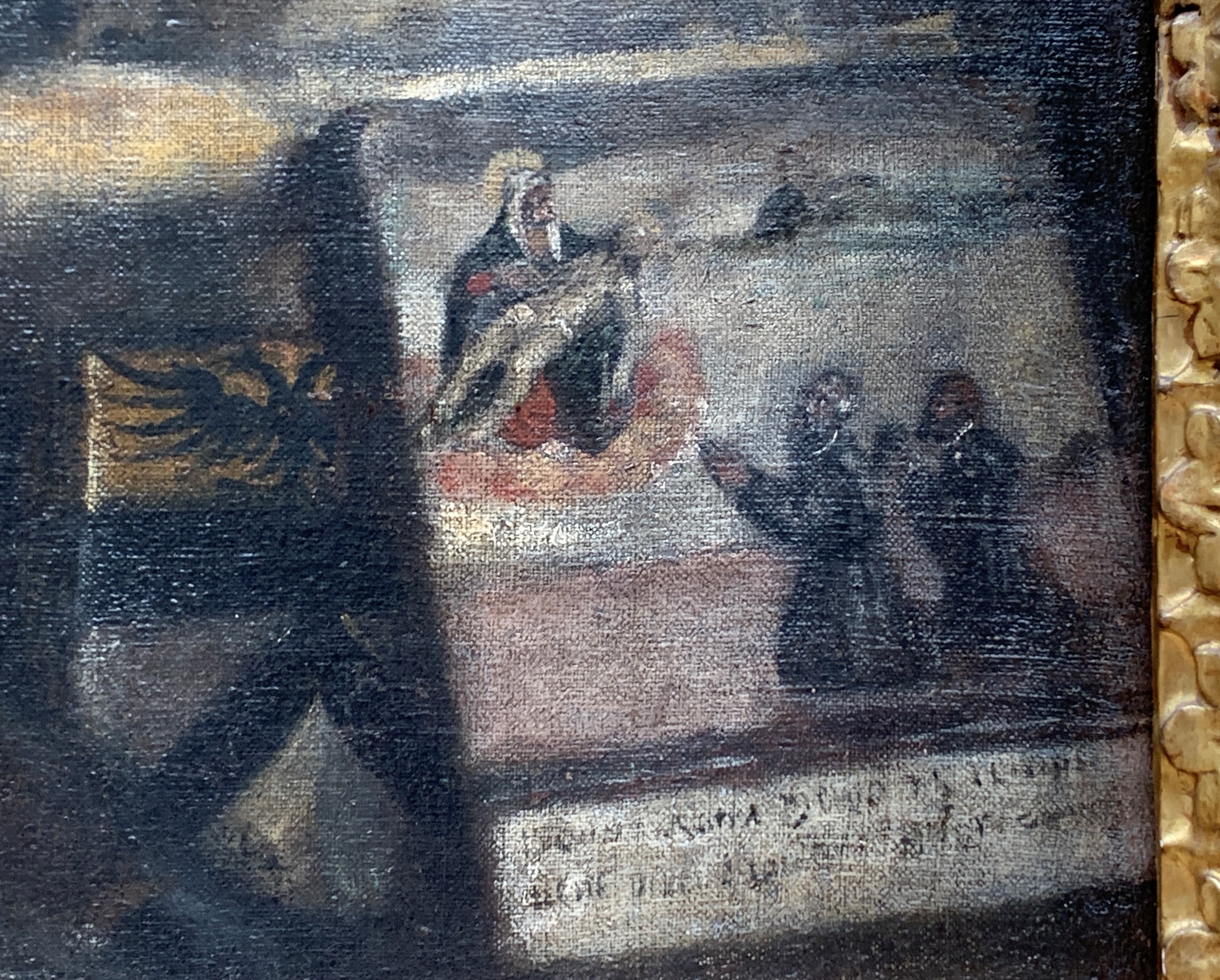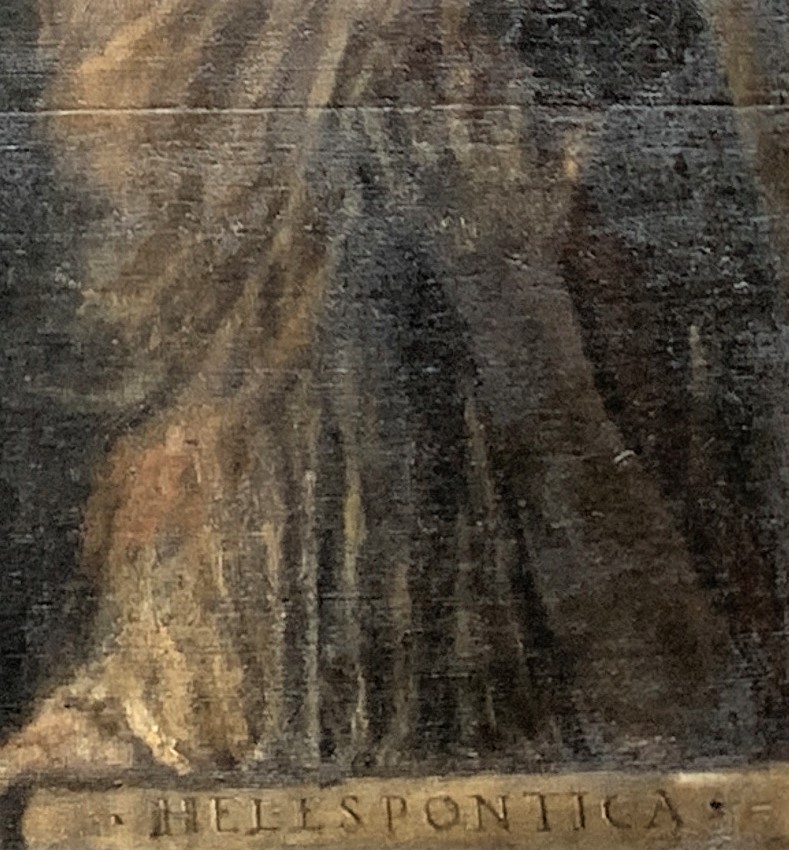The last painting by the great Renaissance painter...
On
August 27th, 1576, Titian, one of the greatest painters of the Venetian Renaissance, died. He was born in a small village, Pieve di Cadore, in the
Dolomites, but he moved to Venice at a very young age to work as an apprentice in Bellini’s workshop. He then became
one of the best known painters of his times: he received commissions even from the emperors Charles V and Philip II. He was a member of an exclusive literary society, together with the writer Pietro Aretino, the architect and sculptor Jacopo Sansovino and the Queen of Cyprus Caterina Corner.
At the
Accademia Galleries we can admire his
very last masterpiece,
The Pietà (i.e.
The Lamentation over the Dead Body of Christ).
The Historical Period
After the
victory against the Ottomans in the famous
Battle of Lepanto of 1571, the Venetian Republic witnessed a
revival of national pride and power: the eternal enemy had been beaten.
Lepanto battle, Andrea Vicentino, Scrutinio chamber, Doge's Palace
Sebastiano Venier, the Admiral of the
Venetian Navy, had bravely faced the ships of the
Turkish Empire; this extraordinary event recalled to mind the heroic deeds of Doge
Enrico Dandolo during the Fourth Crusade of 1204.Unfortunately, in
1575 a terrible
epidemic of plague hit the city: probably, at the beginning it was underestimated, and as a consequence roughly
50,000 people died, that is one third of the population of Venice in those days!
During the epidemic also
Titian died, in late August 1576.
The masterpiece
The Pietà is the very last masterpiece by Titian. The artist painted it
for his own grave, that should have been built in the
Frari Church. After several vicissitudes, in 1814 it found place at the Accademia Galleries.
Titian's Pietà, Accademia Galleries
Christ’s body, on Mary’s lap, is quite impressive because of
the pale, bloodless color of its flesh.The news of Christ’s death is annunciated to the entire world by
Mary Magdalene, and with her raised arm she expands the scene;
the terrible message, then, becomes infinite.
Titian's Pietà, Accademia Galleries, detail
Who’s the man
wearing a red robe, who kneels down and touches Christ’s hand?
It could be Nicodemus or Joseph of Arimathea… it is actually
Titian himself, who portrayed himself as an old and weary bearded man, who
is begging for Divine Salvation.
Titian's Pietà, Accademia Galleries, detail
The scene takes place under an apse basin decorated with
golden mosaics, and here Titian shows how he had been influenced by his master
Giovanni Bellini, who in several paintings
had paid homage to the shining mosaics of St. Mark’s Basilica.
At the center of the half dome we can admire
a pelican, which with its beak tears its own chest to feed its little ones with its own blood:
it stands for Christ’s sacrifice and for his Resurrection.
Titian's Pietà, Accademia Galleries, detail of the pelican
The statues of
Moses and of the Ellespontic Sibyl at the sides represent sort of a theatrical backdrop within which the scene takes place. Both figures stand on bases decorated with a sculpted lion,
the symbol of St. Mark and of Divine Wisdom.
A Painting within the Painting
On the lower right corner of the canvas
the artist portrayed in a small painting himself and his son Orazio as they kneel down in front of another Pietà: Titan’s son died because of the plague one month before his father’s death.
Titian's Pietà, Accademia Galleries, detail
This small painting probably represents
a prayer, a last
desperate pleading for salvation.
This pleading seems to be stressed also by the
hardly visible arm by the Sibyl’s base: it looks really disturbing, as if it was the symbol
of the imminent death of both the man and the artist.
Titian's Pietà, Accademia Galleries, detail of the arm
The Color
In his last works
Titian definitely changes his chromatic palette.
In this Pietà the colors are
quite dark; the brush strokes are
quick, approximate, imprecise; substance seems to crumble. The trembling light stresses the
dramatic event. The forms fade, the
outlines become indefinite, the
light is vibrant, the exact, perfect drawing has been abandoned
in favour of expressive lines.Tiziano Vecellio, the son of a notary, the knowledgable, refined, revolutionary artist who was contended by the greatest figures of his age,
ended his career, as an artist and as a man, painting this very last canvas where the unfinished dominated the entire scene.Did he mean to underline the human condition in front of Death?This is one of the
many questions that this painting seems to suggest. Another question could be:
what do Moses and the Sybil stand for?We will be waiting for you for a
guided tour at the Accademia Galleries, to unveil the symbolism in Titian’s last masterpiece.
Ciao!
Contacts:
info@guidedtoursinvenice.comYou might be interested also in the following itineraries and blog posts:The Accademia Galleries (section:
Classical tours in Venice)
Venice and the plague (section:
Specific tours of Venice)
The Dorsoduro district unveiled (section:
Unusual tours in Venice)
The charm of Dorsoduro (section:
Live virtual tours of Venice)
Venice and our guided tours of the Accademia Galleries: Paolo Veronese (section:
Blog)
Titian's mountains in his paintings in Venice (section:
Blog)
